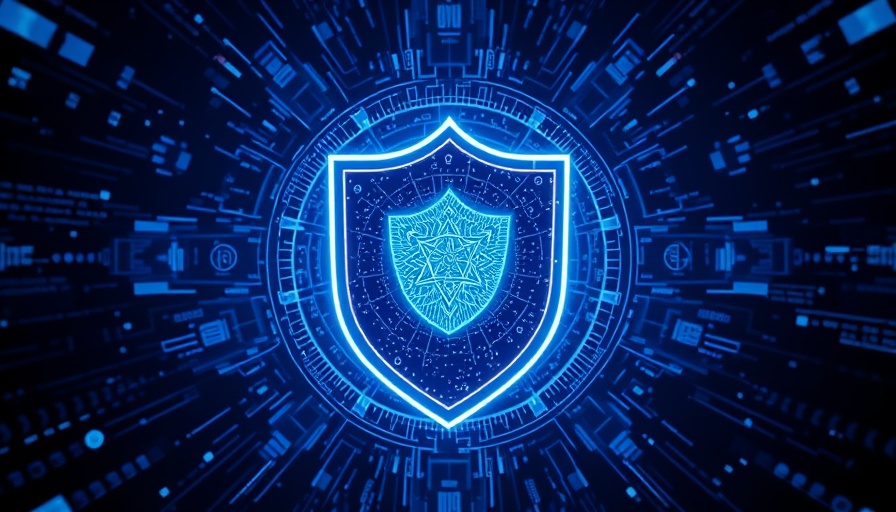
Understanding the Rise of Insider Threats in the Age of AI
Recent research has shed light on a significant shift in cybersecurity concerns: insider threats are now outpacing external attacks, primarily fueled by the advent of artificial intelligence (AI). According to Exabeam's report, From Human to Hybrid, a staggering 74% of cybersecurity professionals agree that AI is enhancing the effectiveness of these insider threats. The study, which surveyed over 1,000 professionals, highlights that 64% of respondents now view insiders – whether acting maliciously or by accident – as a larger risk than external actors.
AI Amplifying Risks: The Role of Generative AI
Generative AI (GenAI) has emerged as a pivotal factor in this rise. It allows malicious insiders or compromised employees to act with greater speed and stealth. Steven Wilson, Chief AI and Product Officer at Exabeam, explained, "Insiders aren’t just people anymore; they’re AI agents operating with valid credentials at machine speed, making malicious actions harder to trace." This heightened engagement underscores the pressing need for organizations to refine their monitoring and detection capabilities.
Insider Threat Growth: A Cross-Industry Concern
As we analyze the data further, the scope of insider threats appears to be intensifying across various sectors. Notably, 53% of organizations reported an increase in insider incidents over the past year, with forecasts predicting persistent growth. Government entities are especially vulnerable, projecting a 73% rise, followed closely by sectors such as manufacturing and healthcare. This trend emphasizes the criticality of securing sensitive information across diverse operational landscapes.
The Geographical Dimension of Insider Threats
Geographical differences in projected insider threat growth present a complex picture. The Asia-Pacific region, including Japan, leads with 69%, likely a reflection of heightened awareness of identity-driven attacks. Conversely, the Middle East reports significant confidence in current defenses, with 30% anticipating a decrease in insider threats. Such variances underscore the need for tailored security strategies that align with local realities and risk perceptions.
AI’s Double-Edged Sword: Evolving Threat Vectors
AI is not just accelerating insider attacks; it is also enabling new, unprecedented threat vectors. Findings indicate that AI-driven phishing and social engineering attacks are now the top concerns for organizations. These methods enhance adaptivity, mimicking legitimate online communications with uncanny precision, creating significant trust exploitation opportunities. As per the findings, 27% of insider threats now leverage AI technologies, underscoring the urgency for companies to adopt AI-driven detection systems.
Unapproved Use of Generative AI: A Growing Concern
The unauthorized use of GenAI tools exacerbates the existing risks, creating a 'dual-risk' framework where these advanced tools, designed to enhance productivity, are repurposed for malicious intent. A striking 76% of organizations reported observed unapproved usage of AI tools. Technology firms, financial institutions, and government sectors are experiencing notably high rates of unapproved actions — 40%, 32%, and 38% respectively. The Middle East stands out, where unapproved AI use is a top concern at 31%, indicating rapid AI adoption amidst potential governance gaps.
Anticipating the Future: Security Strategies Against Insider Threats
Given the shifting dynamics of cybersecurity linked to insider threats, organizations must bolster their defenses. Enhanced training, AI-driven monitoring, and establishing clear usage guidelines for technology can mitigate risks significantly. Employers should focus on educating their employees regarding the dangers of AI misuse and fostering a culture of security awareness. In an era where insider threats are becoming increasingly sophisticated, proactive precautions are essential for safeguarding sensitive data.
Final Thoughts: The New Norm in Cybersecurity
The transformation of insider threat landscapes, significantly powered by AI, necessitates a re-evaluation of security strategies. Organizations must approach this evolving risk with a mindset geared towards innovation, collaboration, and vigilance. As AI continues to integrate into workplace environments, understanding and preemptively addressing these insider threats is not just advisable; it has become imperative.
 Add Row
Add Row  Add
Add 




Write A Comment